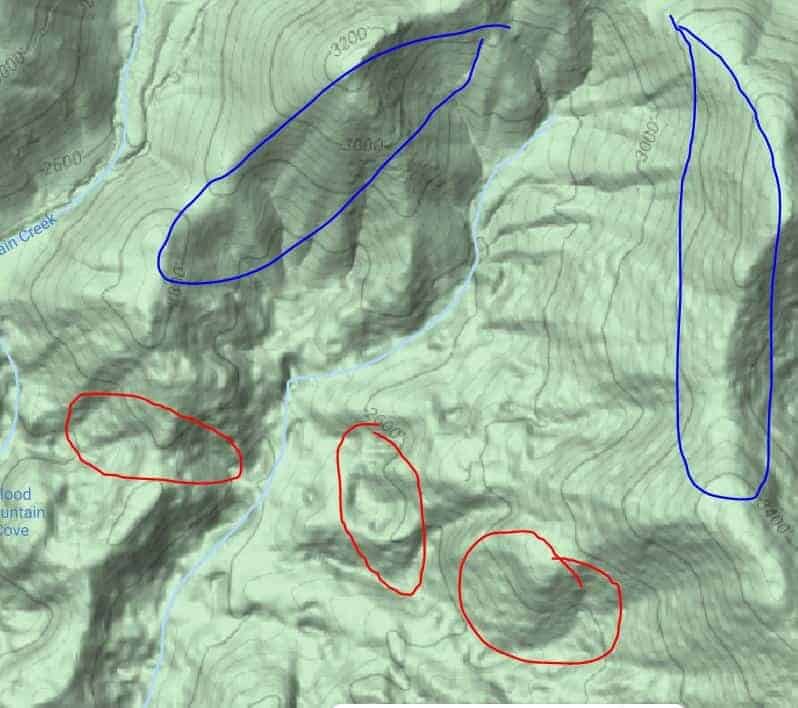One of the most exciting things about hunting is exploring new areas and hunting different species. To do that, you usually have to travel out of state. These out-of-state hunts are typically exhilarating experiences and if you’re lucky, you will bring home exciting stories of your adventures, enough meat to fill your freezer, and maybe even a set of antlers.
Planning out-of-state hunting trips may seem difficult, but it doesn’t have to be. By taking your time and doing enough research, you can make a solid plan for your time out in the woods. If you do it right, you will remember your out-of-state hunts for the rest of your life and they can be well worth the extra effort.
Hunting out of state is obviously fun, but there is a lot that goes into it. Where will you hunt, how are you getting a tag, where will you stay, what will you eat, how do you scout with limited time, what are you going to do with your deer when you shoot it, have the locals been trespassing, etc, etc. Going across state lines hunting usually means you are on your own during your hunt, and that is no easy thing to do. You are responsible for everything, and your buddies are hours away.
Throughout the rest of this article, I cover the steps and questions I ask myself when I am planning an out-of-state hunt. Additionally, I cover how I do my research, the resources that I use, and tools for e-scouting.
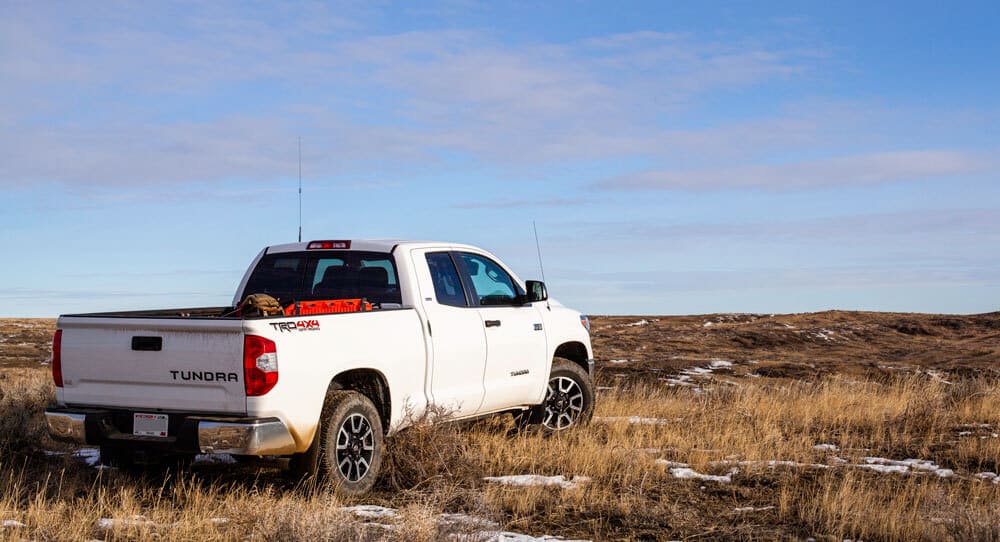
1 | What Do You Want to Hunt?
Once you decide that you’re going to go on an out-of-state hunt, you will need to decide which species you’re going after. If this is your first hunt out of state you should give this a lot of thought. Usually, a whitetail hunt is the main reason hunters go out of state, but there are all kinds of game you can go after.
Many hunters decide they want to shoot an elk. That’s a great goal, but there are other options as well with much higher odds of success, especially if you’re going on a “do it yourself” or DIY hunt.
If money is a high priority then consider one of the most affordable out-of-state big game hunts in the west, black bear. There are several states that offer robust black bear seasons and tags are over the counter even for non-residents. Three of these states are Washington, Idaho, and Oregon. Just keep in mind, affordable doesn’t mean it’s an easy hunt.
Other over-the-counter options include whitetail deer and turkey throughout nearly the entire United States. In the Western United States, mule deer, blacktail deer, wild pigs, and javelinas are also good options. There are plenty of waterfowl and upland hunts available too. Although if this is your first rodeo, you might be better off hunting something you already know how to hunt.
In short, there are a ton of opportunities and game animals to hunt throughout the United States, you just need to do a little research and decide on what you want to hunt, but if I was a betting man, I would say you are going after whitetail.
Did You Know I Had a Newsletter?! 📬
I do! I send out a weekly email that talks all about deer hunting and is a bit more personal than a regular article. If you sign up right now, I will even send you the first chapter of my Ebook “The Hunters Guide to Scent Control” for free! What is there to lose? 🙂
2 | When Can You Hunt?
Deciding what time of year you want to hunt will determine what gear you need, hunting techniques, and which states you can hunt in. For example, if you can only hunt in September and want to rifle hunt elk, there are only a few options across the country.
Another example is spring bear over-the-counter hunts. There are only a few states that allow over-the-counter spring bear hunts, so don’t waste your time with the others. Weapon restrictions also play the same role. If you want to deer hunt with a centerfire rifle, you can forget hunting most of the midwest.
Your gear will also be drastically different between early and late-season hunts. Not only will your clothing needs change but also your sleep system if you camp out. During early seasons you might be able to get away without a heat source and a pop-up style tent, but during late-season hunts, it’s much more comfortable to have a way to warm up and dry out gear.
3 | How Do You Want to Hunt?
Which weapon do you prefer to use, do you want to go on a DIY hunt or hire a guide? Answers to these questions will influence tag availability, the difficulty of drawing or obtaining a tag, and seasons you can hunt, and your chance of harvesting an animal.
Weapon Type
Are you a dedicated bowhunter, or rifle hunter, or maybe you prefer muzzleloaders? Rifle tags are typically harder to draw than muzzleloader or archery tags. You also need to figure out if you need to draw a tag or if you can buy one over the counter. If you need to draw one, you should apply to that draw as soon as you can. You might want to apply to multiple hunts to build up preference points and get a good chance of drawing a tag this year.
Generally, most states hold rifle hunts later in the season than archery or muzzleloader. Typically rifle deer and elk hunts are held in October, November, or December, while archery hunts and muzzleloader hunts are held in September and early October. Some states also offer opportunities for late-season archery and muzzleloader hunts in December or even later into January.
These are just generalities and there are certainly many exceptions but the key takeaway here is that which weapon you choose will dictate when you can go hunting. Do NOT assume you know when the season is. You don’t want to show up to your spot just to find out they changed the season dates this year. Always check your season dates, and make sure you can use your preferred weapon.
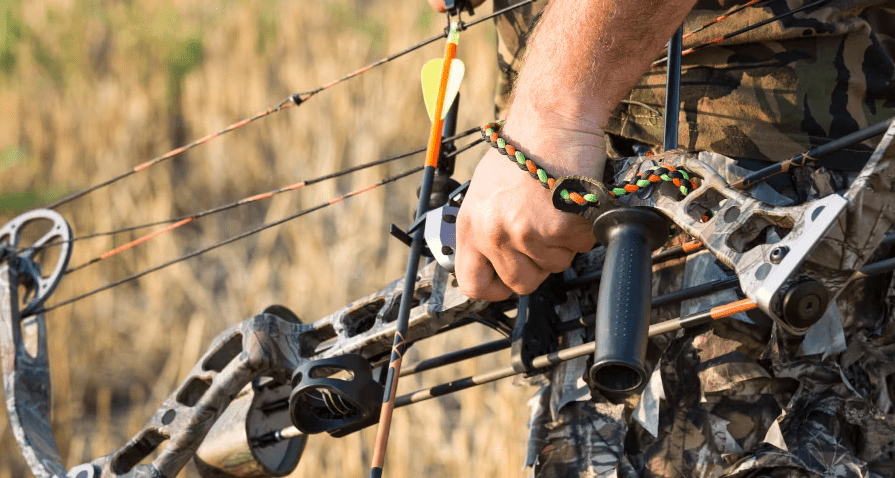
DIY or Outfitter?
This is a key consideration. If you go with a good outfitter your chance of success will be significantly higher than if you do a DIY hunt. For example, success rates for elk are typically around 10% while some outfitters will have 50% to 100% success rates.
One of the biggest factors influencing if you use an outfitter or not is the price. Outfitted hunts, even just drop camps, are typically thousands of dollars. A DIY out-of-state elk hunt will cost around $1,500 with license and tag fees and fuel making up the bulk of that.
If you can and want to prioritize harvesting an animal, the first year you hunt a new species or a different state go with an outfitter. You will learn a lot and can then apply what you learned on your next DIY hunt. In some states, it’s easier to get a tag if you go with an outfitter as well.
4 | Where Do You Want To Hunt?
Now that you’ve decided what, when, and how you want to hunt you need to choose the state and then narrow that down even further to a specific area. This isn’t the easiest thing to do, and it will require plenty of research.
If you are after whitetail, there is a saying my dad has, “to kill big deer, you have to go where big deer are”. So researching some statistics on which state has the biggest deer can be a good way to pick somewhere to go. I was also curious which state had the biggest deer on average, so I wrote an entire article on it. If you want to save a few hours of research, check out “Where are The Biggest Whitetail Deer” here.
Researching Available Hunts by State
You likely already have a few different states in mind. Go to the state fish and game agencie’s websites and find out what available hunts they have for the weapon type and species you would like to hunt. Pay special attention to hunt dates, if there are draws, and any draw or purchasing deadlines.
If you are interested in a draw hunt, and it’s not random then you will need to accrue preference and/or bonus points to have a good chance of drawing. This may take anywhere from a few years to ten or more. The number of points you will need to draw a unit varies drastically.
There are several good resources that make the research portion easier. The two most popular are GoHunt and TopRut. These programs supposedly make research easier but if you don’t want to pay for them (like me) then you can also use the state’s game agency’s website.
If it were me, and it is, I would make a spreadsheet with the season dates of the main states I am interested in, take notes on their tags, and then use that to look at all of my options. Google sheets is free!
How to Draw Tags
Each state has its own drawing system and most of them are different, sometimes they even vary by species. In many cases, states require hunters to buy a hunting license to apply for a tag or buy a point. Generally, there are two primary types of draws, random and preference points.
Random draws are exactly what they sound like. Each year hunters put in for the tag they want and names are randomly chosen. Preference point systems are much more complicated and full of nuances, but in general, each year a hunter applies, they get one point. These points accrue each year and eventually, the hunter will have enough points to draw the hunt of their choice.
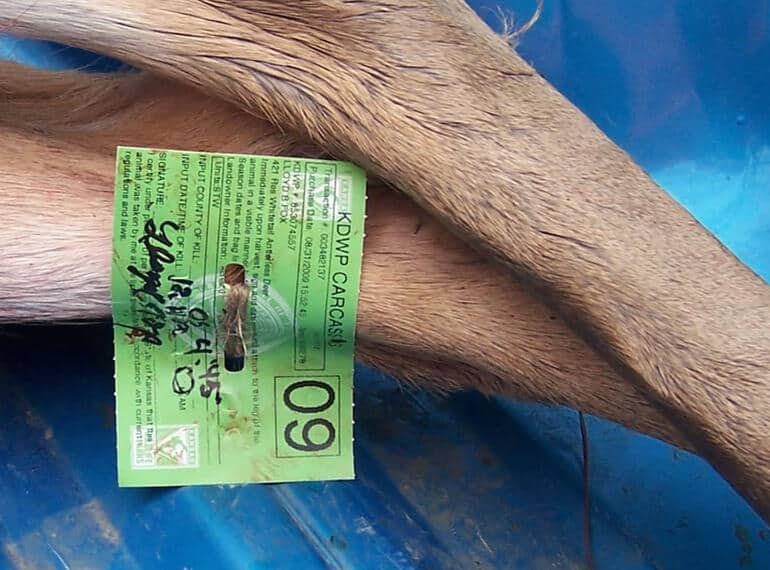
Preferences point hunts can get extremely complicated and the rules vary by each state. Some states like Montana even have two different types of points. There is too much information to cover here but the important thing to know is that each state drawing system is covered in detail in its regulations.
You can apply for a draw by submitting an application that states DNR website before their deadline, but you have to buy a license first, which is what keeps us all from applying to every hunt in the country. If you are just getting started and would like to frequently go on out-of-state hunts, you should focus on accruing points in as many states as you can afford to apply in and buy over-the-counter tags for the first few years.
Public Land or Private Land?
If you are going out west, unless you are paying trespass fees or hiring a guide and hunting a private ranch, you will be hunting on public land. Public land in the west is not like most public land areas in the midwest or the eastern US. In the West, there are millions of acres of public land in large continuous tracks that are just waiting to be explored.
That said, some areas are more popular and therefore busier than others. If you are hunting on public land, those that are more willing to get away from roads are going to be better off. If you can’t get too far from the road for one reason or another, then look for pockets or areas that are easily overlooked.
I consider a mapping program a necessity when hunting states or areas you aren’t familiar with. There are a ton of hunting apps that will do this, but you usually have to pay for them. These programs show you public and private land boundaries and will keep you out of trouble, which is a good thing while hunting out of state.
5 | Take E-Scouting Seriously
In my opinion, e-scouting is one of the most important things to do before a hunt in a new area. E-scouting is the art of using online maps, apps, and tools to scout an area. It’s often the only way nonresident hunters can scout an area before they arrive. Let’s go over some of the best tools you can use to scout from the satellites.
Before I dive into different tools you can use, if you want to see an example of E-scouting, you should read my other article where I dive into how to find public land buck beds. I talk all about how to use maps to get the job done, and even walk through an example with you.
Google Earth Pro
Google Earth is an incredible scouting tool. I’ve successfully used it to scout dozens of new areas where I’ve hunted and harvested game. Google Earth Pro is free to download and contains incredible satellite imagery. I use this to key in on burns, wood lines, specific vegetation, wallows for elk, parks, and water sources.
You can also add additional map files to Google Earth that other hunters have made for given public land areas, you just have to find them (or buy them). These include topographic maps, hunting unit boundaries, and much more. Google Earth is a must, and one of the most useful features is the 3D view. This can be used to help display how steep the terrain is but more importantly, can be used to find good glassing spots.
OnXMaps, Gaia GPS, and GoHunt
There are multiple apps available that are useful for online scouting. The most popular are OnXMaps, Gaia GPS, and GoHunt. Gaia GPS can even be linked with Google Earth and use the same satellite imagery.
All of these apps include hunting specific data and information. This information may include trailheads, forest roads, gates, unit boundaries, snow depth, timber harvests, motor vehicle management units, cell coverage, slope angles, wilderness areas, and much more.
Call Biologists and Conservation Officers
Talking to conservation officers and government biologists is a great way to get valuable information on your hunt. These people typically have intimate knowledge of their regions. Remember, employees that work for fish and game agencies are often hunters themselves. You likely won’t get pinpoint locations but they will almost always be willing to help narrow down areas to hunt. Think of them as local hunters that are forced to pick up the phone and answer your questions 🙂
6 | Plan Trip Logistics
This can be one of the most stressful parts of planning a hunting trip, but this is where the rubber meets the road. Without good logistics, the trip could take a sour turn. Remember two is one and one is none. If there’s an item or detail that could make or break the trip then make sure you have a backup.
There are a million “hunting checklist” articles out there, but I thought I would make a quick checklist for this article that you can download right here. I based this off of a real checklist I made on my notes app for my last out of state hunt, so I know it has everything you will need for a whitetail hunt. Just sign up for my weekly newsletter below and I will send it right to your inbox! 🙂
How Are You Getting to Your Destination?
This is likely already obvious to you but is worth considering. If you have a car it might work in some states or even areas in most if not every state, but some roads look a lot better on a map than in person. When was the last time you checked your oil, tires, or just generally inspected your vehicle? You do NOT want to get stranded hours from home. Make sure your truck is in good working order before leaving.
Hotel or Camp?
This likely depends on the type of experience you are after and your funds. Camping is more work but can be done for free if you have the gear, while hotels will range from $75 to $150 a night. Some people even skip it all and just sleep in their trucks in a Walmart parking lot while living off gas station food on their trip.
My personal preference is to camp. Camping saves money but also allows you to have a better experience in the outdoors. Although I have hunted for years from a hotel when I go out of state after whitetail. It is easier to do, and requires you to bring a lot less gear. Plus, it’s warm!
What Are You Going to Do With a Deer?
This is one of the most important things to consider but is often overlooked. How will you take care of the meat? Make sure you have a deer hang, and everything you need to process a deer. If you want a little refresher on what you need to process a game animal and pick up a few new tips too, check out my other article titled “Why is Deer Meat Gamey” and you will learn how to make your deer(or any other wild meat) as tasty as possible.
It is always a good idea to keep your meat in a cooler, no matter the temperature or how you hunt. If you are hunting whitetail, quarter it up and put it in the cooler at your camp. If you are hunting out west, you might need to pack your deer out in game backs and smaller cuts, but when you get to the truck, a cooler is ideal for the drive home.
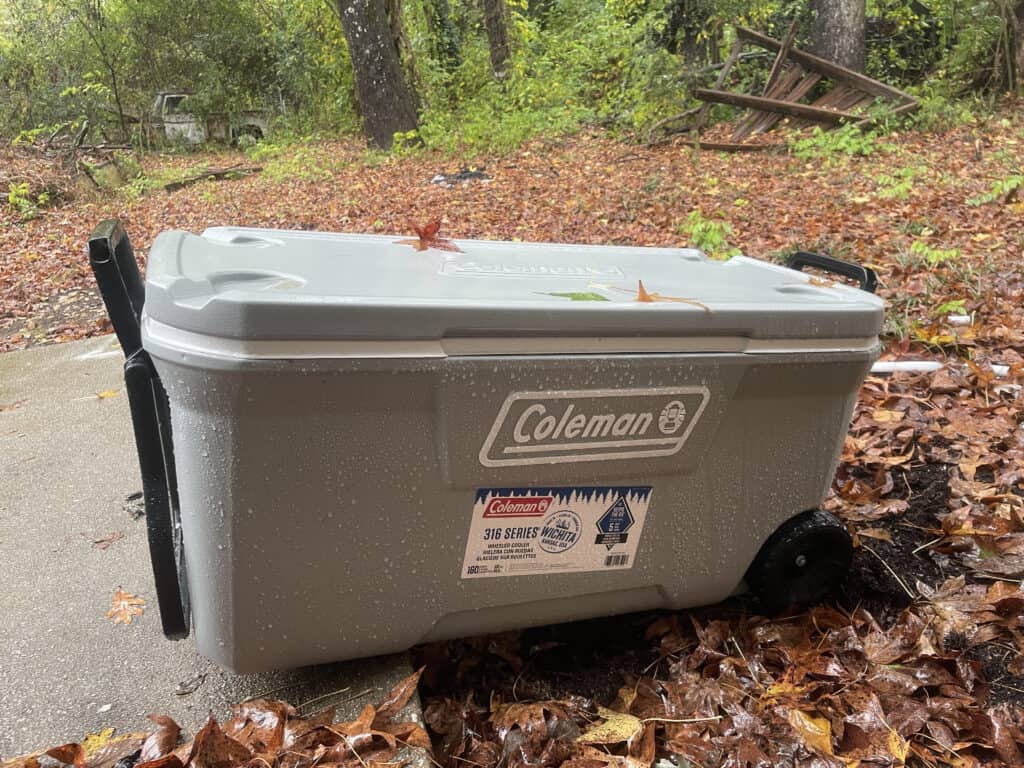
Most deer can fit in a single 120 qt cooler, but my black bear filled three of those coolers including the hide, I am sure an elk would need at least two coolers. Just do your research, and make sure you have enough coolers to get the job done, especially if you are shooting multiple animals.
When we were hunting whitetail out of state, we picked up a few bags of ice on the way there just to make sure we were ready to process a deer. If you can leave your coolers in the same place for the duration of your hunt, this might be what you should do too.
Closing Thoughts
Out-of-state hunts can be some of the most fun hunts you’ve ever been on, but it’s important to prepare for them. Figuring out where and when you want to go and then getting a tag can be the toughest part. You just have to make sure you plan everything out and have the right gear, because you are on your own out there. Once you get one out-of-state hunt under your belt, planning others will be easy. I know I look forward to mine every year, and each year, the planning gets easier.
Sister Post | Where Are the Biggest Whitetail Deer?
A sister post is another post that I have written that follows along with the same topic as the one you just read. After reading this article, you will probably like this next one even more! Here is a little teaser…
Most of us choose to hunt whitetails in our home state, but where are the biggest whitetail deer? If you just travel one or two states away you will see a definite difference in the deer population. On average, they may be bigger-bodied and have bigger antlers, or they could be much smaller. With a little research, you can find the perfect place to harvest much bigger bucks with the same amount of effort….Keep Reading
General Rule of Thumb | Bergmann’s Rule
Bergmann’s rule states that specimens of the same species will differ in size dependent upon the climate they live in. Specimens that live farther away from the equator (colder climates) will grow to be…Keep Reading
So Where Are the Biggest Whitetail Deer?
There are a few different ways we can compile whitetail harvest data to answer this question. The best in my opinion would be to…Keep Reading
Thank you for reading my article! I hope you enjoyed it, and if you have any questions or feedback, please send me an email at Patrick.Long@omegaoutdoors.net. If you want to learn more about me or Omega Outdoors, visit my About Page. Otherwise, I hope you have a great day, and check out some of my other articles while you’re here!

